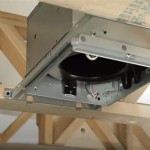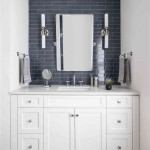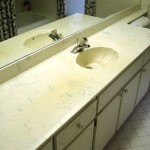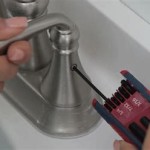How to Recaulk a Bathroom Floor: A Comprehensive Guide
Recaulking the bathroom floor is a crucial maintenance task that protects against water damage, prevents mold and mildew growth, and maintains the aesthetic appeal of the bathroom. Over time, caulk can crack, shrink, or peel, creating pathways for water to seep beneath the flooring and into the subfloor. This can lead to costly repairs and health hazards. This article provides a detailed, step-by-step guide on how to recaulk a bathroom floor effectively, ensuring a watertight and long-lasting seal.
Before beginning, it's essential to gather the necessary tools and materials. This preparation streamlines the process and ensures a professional-looking result. The required materials typically include: new caulk (specifically designed for bathrooms), a caulk gun, a caulk removal tool (or utility knife), a scraper, rubbing alcohol, clean cloths or paper towels, painter's tape, and safety glasses. The choice of caulk is important; silicone-based caulk with mildew inhibitors is generally recommended for bathrooms due to its water resistance and mold prevention properties.
1. Removing the Old Caulk
The first and often most time-consuming step is removing the existing caulk. Thorough removal is critical because new caulk will not adhere properly to old, deteriorated caulk. Attempting to apply new caulk over old caulk can create a weak seal, leading to future leaks and the need for premature re-caulking.
Start by softening the old caulk if it is particularly hard or brittle. Applying a warm, damp cloth to the caulk for a few minutes can help to make it more pliable and easier to remove. Safety glasses are essential during this step to protect the eyes from flying debris.
Using a caulk removal tool or a utility knife, carefully score along both sides of the caulk bead. Apply consistent pressure and avoid digging into the surrounding surfaces (tiles, grout, or flooring). The goal is to separate the caulk from the adjacent surfaces without causing damage.
Once the caulk is scored, use the caulk removal tool or a scraper to pry up the old caulk. If the caulk is stubborn, try using a heat gun on a low setting to gently warm the caulk and soften it further. Be cautious when using a heat gun, as excessive heat can damage certain materials. Work slowly and patiently, removing the caulk in sections.
After removing the bulk of the caulk, residue may remain on the surfaces. Use a scraper or a stiff brush to remove any remaining pieces. For particularly stubborn residue, mineral spirits or a specialized caulk remover can be applied, following the manufacturer's instructions carefully.
Finally, clean the area thoroughly with rubbing alcohol and a clean cloth. Rubbing alcohol removes any remaining dirt, grease, or mildew, providing a clean surface for the new caulk to adhere to. Allow the area to dry completely before proceeding to the next step.
2. Preparing the Surface for New Caulk
Proper surface preparation is essential for ensuring a strong and watertight seal. After removing the old caulk and cleaning the area, it is important to create a clean, dry, and slightly textured surface. This preparation promotes optimal adhesion of the new caulk.
Inspect the area for any existing damage, such as cracks or chips in the tiles or grout. Repairing these imperfections before applying new caulk will prevent water from seeping into these areas and causing further damage. Small cracks can be filled with grout repair compound, while larger chips may require replacing the affected tile.
Once any necessary repairs are completed, thoroughly dry the area. Moisture can inhibit caulk adhesion and lead to mold growth. Use a clean, dry cloth to wipe the area, and consider using a fan or dehumidifier to speed up the drying process, especially in humid environments. Allow the area to dry for at least 24 hours to ensure complete dryness, particularly if any repairs were made with grout or patching compounds.
Apply painter's tape along both sides of the area to be caulked. This creates clean, even lines and protects the surrounding surfaces from excess caulk. The tape should be applied about 1/8 to 1/4 inch away from the edge of the joint, depending on the desired caulk bead size. Use a putty knife or a similar tool to firmly press the tape down, ensuring a tight seal and preventing caulk from seeping underneath.
For larger gaps or uneven surfaces, consider using a backer rod. A backer rod is a foam or rubber cord that is inserted into the gap before applying the caulk. It provides a surface for the caulk to adhere to and prevents the caulk from sinking too deeply into the joint. Choose a backer rod size that fits snugly into the gap without being overly compressed.
3. Applying the New Caulk
Applying the new caulk requires a steady hand and a consistent technique. The goal is to create a smooth, even bead of caulk that completely fills the joint and adheres securely to the surrounding surfaces. Practice on a piece of cardboard or scrap material before applying the caulk to the bathroom floor to get a feel for the caulk gun and the flow of the caulk.
Load the caulk tube into the caulk gun according to the manufacturer's instructions. Cut the tip of the caulk tube at a 45-degree angle, using a utility knife or a caulk tube cutter. The size of the opening will determine the width of the caulk bead. Start with a small opening and enlarge it as needed.
Position the caulk gun at a 45-degree angle to the joint and begin applying the caulk. Apply consistent pressure to the trigger of the caulk gun and move the gun smoothly and steadily along the joint. Maintain a consistent speed and angle to create an even bead of caulk. Avoid stopping and starting, as this can create unevenness in the caulk bead.
Apply slightly more caulk than is needed to fill the joint. This will allow for a slight excess that can be smoothed out in the next step. If accidental excess applications occur, it is best to deal with it as soon as possible. This minimizes damage to surrounding materials.
Immediately after applying the caulk, use a wet finger or a smoothing tool to smooth the caulk bead. Dip the finger or tool in water with a drop of dish soap to prevent the caulk from sticking. Apply light pressure and run the finger or tool along the caulk bead in a smooth, continuous motion. Remove any excess caulk with a damp cloth.
Remove the painter's tape immediately after smoothing the caulk. Pull the tape away from the caulk bead at a 45-degree angle to prevent lifting or tearing the caulk. This will reveal clean, even lines and create a professional-looking finish. If any caulk seeps underneath the tape, clean it up immediately with a damp cloth.
Allow the caulk to cure completely according to the manufacturer's instructions. This usually takes 24 to 48 hours. Avoid using the bathroom during the curing process to prevent water from damaging the caulk. The curing time varies depending on the type of caulk and the humidity level in the bathroom. A longer curing time may be needed in humid environments.
Inspect the newly caulked area after it has cured. Look for any cracks, gaps, or imperfections. If any imperfections are found, reapply caulk to those areas, following the same steps as before. Ensure the new caulk overlaps slightly with the existing caulk for a seamless seal.
Regularly inspect the bathroom floor caulk for signs of wear and tear. Recaulk as needed to maintain a watertight seal and prevent water damage. Proper ventilation of the bathroom can help to prevent mold and mildew growth, prolonging the life of the caulk. Consider using a bathroom fan during and after showers or baths to reduce humidity levels.
By following these steps, a professional and watertight caulk seal on the bathroom floor can be achieved. This minimizes risks of water damage and prolonged longevity of the flooring. This also reduces the risk of health hazards due to mold and mildew growth.

Perfect Toilet Caulking Actually Easier Than Doing A Bad Job

The Complete Guide To Re Caulking Your Bathroom

How To Caulk Between The Tub And Tile In Bathroom Diy

How To Re Caulk A Shower Dap Global

Clean Vintage Bathroom Tiles Caulk More Cleanly With Painter S Tape

How To Remove Silicone Caulk The Best Tricks

How To Waterproof A Shower Tub Threshold On Floating Vinyl Floor

How To Re Caulk A Shower Or Bathtub

How To Recaulk A Bathroom Tile Grout Cleaning Sealing Caulking Services For Denver

How Do I Repair Caulk Between The Floor Tile And Baseboard Hometalk
Related Posts







